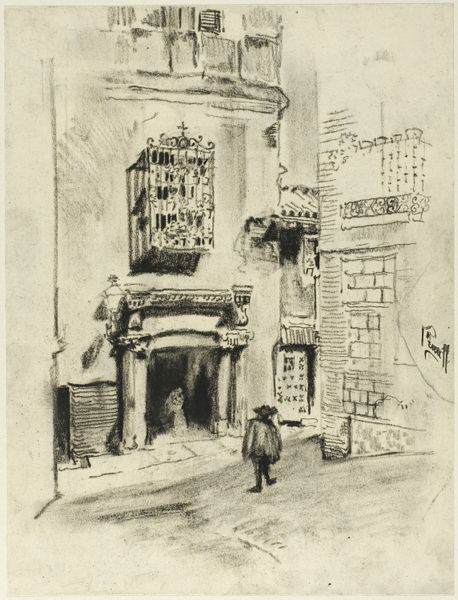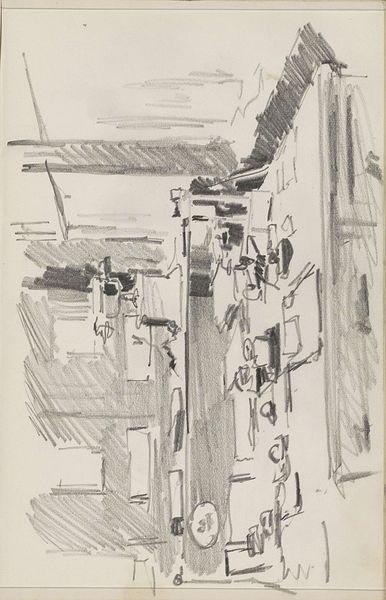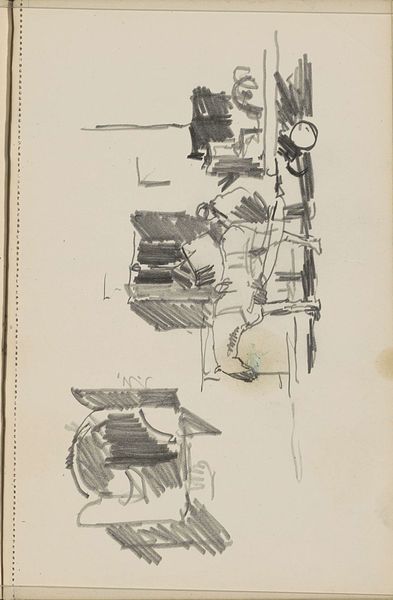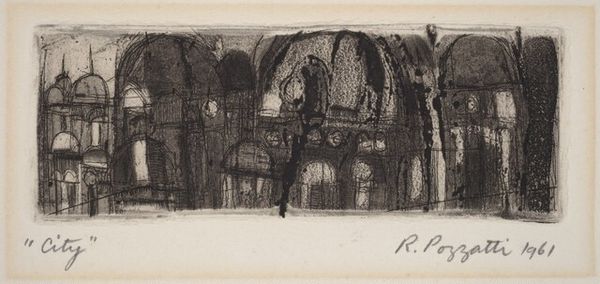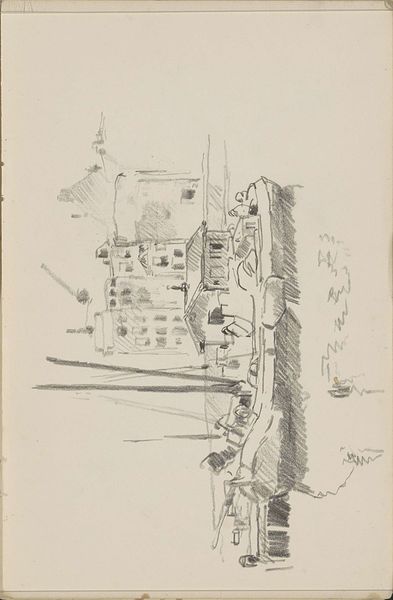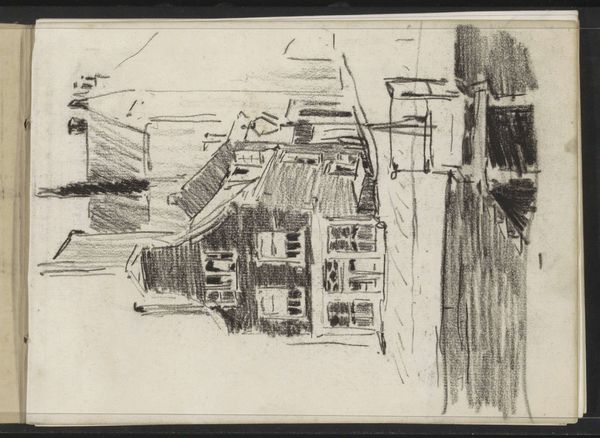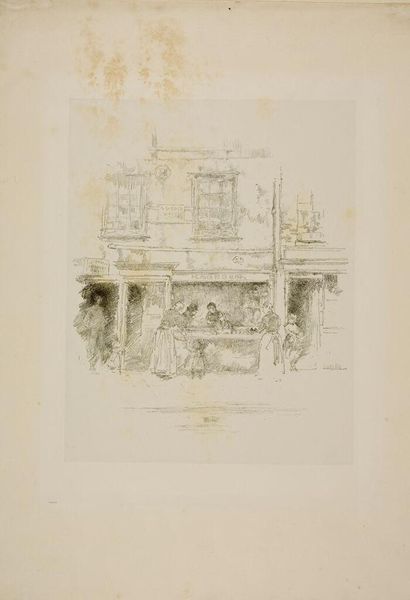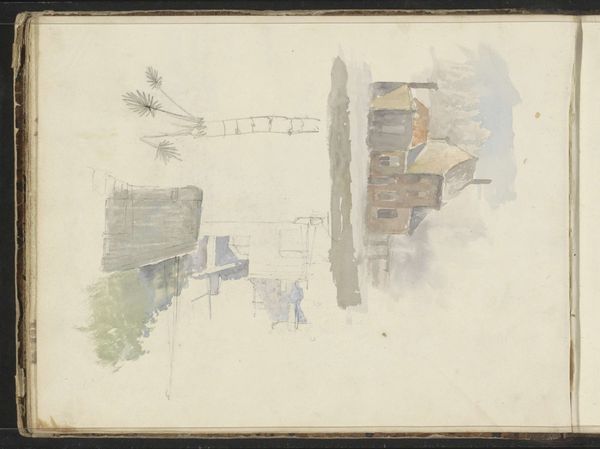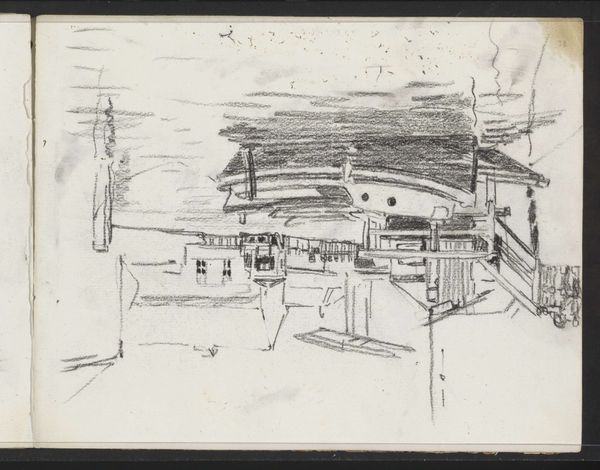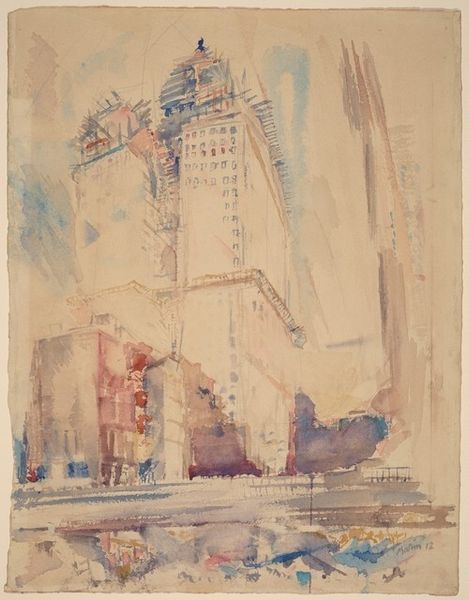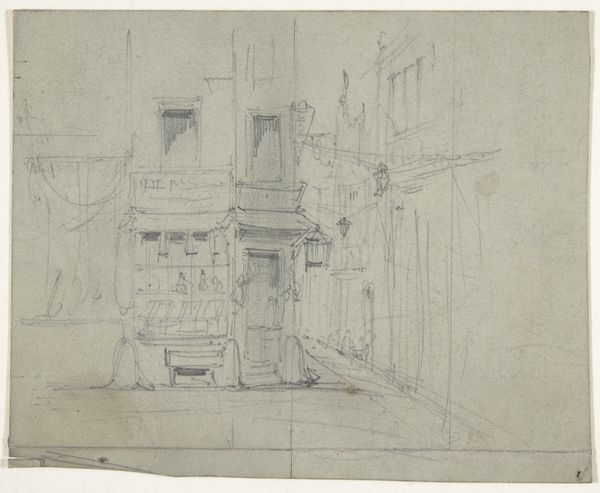
Dimensions: image (irregular): 28.58 × 73.84 cm (11 1/4 × 29 1/16 in.) sheet: 46.67 × 89.22 cm (18 3/8 × 35 1/8 in.)
Copyright: National Gallery of Art: CC0 1.0
Curator: This is Prentiss Taylor's "At George C. Miller & Son—Lithographers," created in 1961, a watercolor drawing that provides a glimpse into the daily operations of a lithography workshop. Editor: Well, just at first glance, I find the mood so calming. It is odd to find so much tranquility in a print shop; all those machines must have roared! But somehow, it has an incredible peace—almost Vermeer-like in its domestic stillness. Curator: Absolutely, but the placidity belies the very intricate layers of meaning woven within the piece, right? Note how Taylor, active during the Harlem Renaissance, was attuned to the Black working experience in New York. These Black laborers here aren’t just figures—they are central to understanding labor history and racialized divisions of work. Editor: Yes, precisely! And notice the contrast in the artist’s rendering of the two figures. On the one hand, we have the one seated in full light; the lithographer. Then, the other two, who have slightly shadowed faces and slightly darker skin tones, stand on the periphery. Are they simply framed this way as compositional balance? I doubt it! This has a powerful undercurrent when considered through that social-political lens, as you pointed out! Curator: Considering his ties to the Harlem Renaissance, his modern yet realistic style emphasizes these themes of social realism and the visibility of marginalized people within an art world often denying them a place. So we need to look at questions such as who makes art and for whom. It questions class structures within the commercial art world. Editor: Makes me wonder if these very workers pictured within were printing advertisements, artworks and prints, and other propaganda they likely wouldn’t consume, champion, or profit from. The implications are really poignant, considering that at least three working class citizens made this picture, in a way. Curator: It indeed compels a more layered reading beyond the immediately apparent aesthetic pleasure—a deep engagement with social inequities that were so visible, as well, during the 1960s. Editor: Thinking about this image through labor, economics, civil rights. Now it becomes more profound; even somber, rather than a purely observational moment frozen in watercolors. A nice meditation to conclude our time together. Curator: Precisely! It pushes us to re-examine labor beyond simple depictions of labor; it calls for a continuous investigation.
Comments
No comments
Be the first to comment and join the conversation on the ultimate creative platform.

